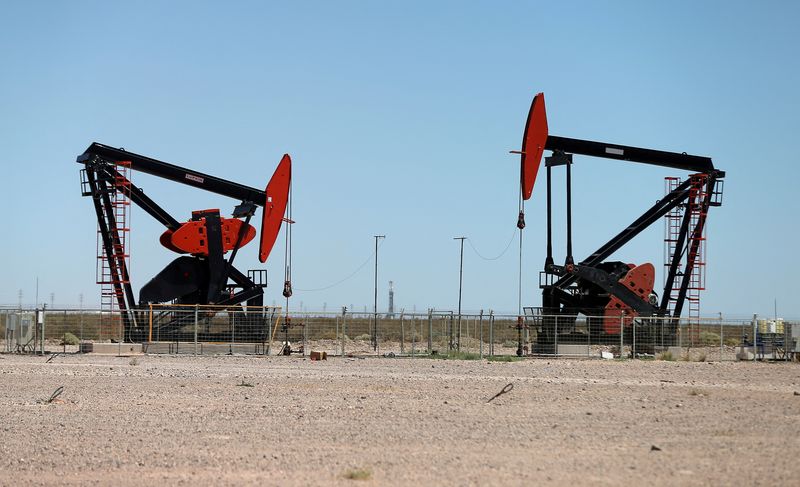
By Laila Kearney
(Reuters) – Oil prices edged down on Wednesday after industry data showed U.S. crude inventories had swelled more than expected, while the market kept watch on diplomatic efforts in the Middle East as Israel continued attacks on Gaza and Lebanon.
Brent crude futures dipped 31 cents, or 0.4%, to $75.73 a barrel by 0011 GMT. U.S. West Texas Intermediate crude futures shed 32 cents, or 0.5%, to $71.42 per barrel.
Crude futures settled higher in the two previous sessions this week.
“With oil prices swinging from oversold to overbought territory within short time frames, maintaining a position in either side of the market can prove challenging,” Jim Ritterbusch, of Ritterbusch and Associates in Florida, said in a note.
U.S. crude stocks rose 1.64 million barrels last week, according to market sources, citing American Petroleum Institute figures on Tuesday, weighing on prices. Analysts polled by Reuters expected a 300,000-barrel increase in crude stocks.
Gasoline and distillate fuel, meanwhile, fell by a combined 3.5 million barrels.
Official U.S. government oil inventory data is due on Wednesday at 10:30 A.M. EDT (1430 GMT).
In the Middle East, U.S. Secretary of State held “extended conversations” with Israeli Prime Minister Benjamin Netanyahu and senior Israeli leaders, urging them to get more humanitarian aid into Gaza, a senior State Department official said.
Israel on Tuesday also confirmed it had killed Hashem Safieddine, the heir apparent to late Hezbollah leader Hassan Nasrallah who was killed last month in an Israeli attack targeting the Iran-backed Lebanese militant group.

Goldman Sachs on Tuesday said it expects oil prices to average $76 a barrel in 2025 based on a moderate crude surplus and spare capacity among producers in OPEC+, which groups the Organization of the Petroleum Exporting Countries and allies led by Russia.
Oil found some support on signs of a recovery in oil demand from China, the world’s biggest importer of crude, from efforts by Beijing to stimulate the country’s economy. Some analysts recently raised expectations for oil demand.
This post is originally published on INVESTING.


